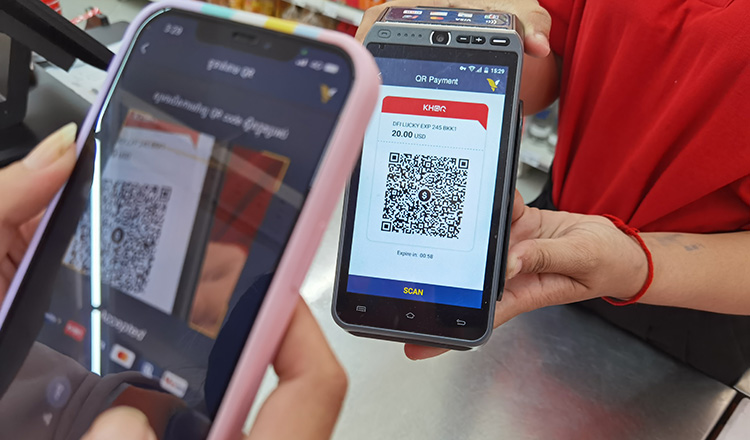
An Asean QR code, providing a common platform for the digital payment services of all countries in the region, is likely to be a reality by this September, as the efforts for the integration of the services gathered momentum in the past couple of months.
ASEAN Business Advisory Council (Asean-BAC) Chairman Arsjad Rasjid recently indicated that a universal QR code for the region is not a dream anymore. “In fact, digital QR codes can be used in all Asean member countries by this September,” he told Indonesia’s Antara news agency.
Arsjad said this was an agenda of ‘Asean Leaders’ Interface with Representatives of Asean-BAC,’ and that all countries in the region have agreed to the universal integration of their respective QR code payment services.
The integration will help visitors from any Asean country to make a digital payment in another Asean country using their own country’s QR code. For example, Cambodians visiting any of the countries in the region will be able to make payments using KHQR, the digital payment platform of the country.
It may be recalled that Cambodia has already integrated KHQR with ThaiQR of Thailand for digital payments services and reports emerging yesterday indicated that it will also do this soon with Laos.
The integration will also help the cross-border transfer of money.
According to media reports from Laos, the country will start using QR code transactions with neighbouring countries Vietnam, Thailand and Cambodia from the fourth quarter of the year.
Vietnam News reported last month that the National Bank of Cambodia (NBC) is preparing to sign agreements with the State Bank of Vietnam and the Bank of the Lao People’s Democratic Republic to promote the use of Cambodia’s local currency riel in their economic activities. This initiative would allow consumers to use riel for purchasing products/services in other countries through QR codes linked to their domestic accounts.
According to Asean-BAC, in addition to Thailand and Cambodia, QR codes between Asean countries such as Indonesia and Malaysia, Indonesia and Thailand, Singapore and Malaysia, and Singapore and Thailand have also been connected. Several other QR code systems between ASEAN countries will be finalised soon.
It said the central banks from five Asean countries such as Bank Indonesia (BI), Bank Negara Malaysia (BNM), Bangko Sentral ng Pilipinas (BSP), Monetary Authority of Singapore (MAS), and Bank of Thailand (BOT) have agreed to collaborate in realising and supporting faster, cheaper, transparent, and inclusive payments.
Last April, during a visit to Cambodia, Arsjad met top officials in the government and NBC seeking support for the fast integration of QR codes. He later told Khmer Times that the officials were very supportive of the idea.
The Asean QR code system involves central banks in the region working directly with one another. Fees and exchange rates can be determined by mutual agreement between the central banks themselves, making transactions more efficient and less costly.
Arsjad said the agreement on the universal QR code reflects the region’s push toward Asean centrality.
One of the primary advantages of this regional payment system is its ability to protect Asean member states from exchange rate fluctuations. As transactions are conducted in local currencies, settlements are not affected by fluctuations in the US dollar exchange rate.
Moreover, this initiative has transformative potential for micro, small, and medium-sized enterprises (MSMEs) by enabling them to access markets beyond their home countries, he said.
According to Arsjad, QR payment methods are indeed highly sought after as they simplify transactions and have the potential to reduce cross-border transaction costs. This payment method offers convenience, speed, and security for countries in the Asean region.
By adopting a uniform QR code system, Asean countries aim to promote interoperability and facilitate cross-border transactions. This initiative eliminates the need for diverse payment platforms and enhances the efficiency of all financial transactions, benefiting businesses, consumers, and the entire ecosystem, said a press release quoting Arsjad.
“Together, we can drive the Asean region towards a future of seamless and fast transactions, inclusive economic growth, and enhanced financial integration through the digitization of the financial ecosystem,” said Arsjad.
Through the QR code transaction system, Asean tourists can easily make purchases in other member countries without worrying about currency conversion or exchange rate fluctuations. This initiative will boost the growth of the tourism and trade sectors in Asean as a whole.
“We hope that all QR code systems between countries in the region can be finalised at the 43rd Asean Summit in Jakarta and presented to the leaders of Asean countries in September 2023,” said Arsjad.
Source: Khmer Times
Share: